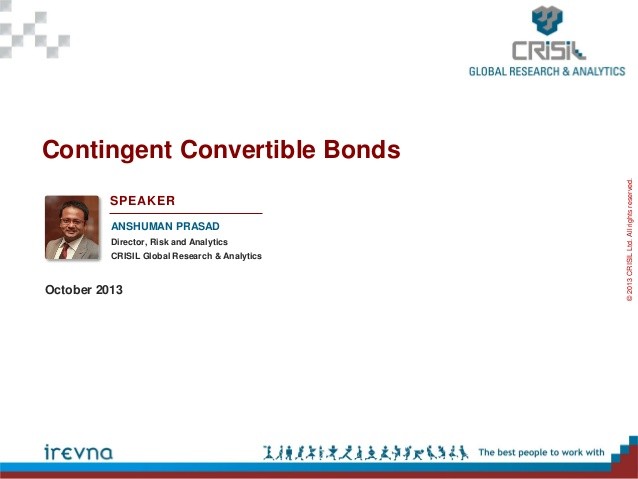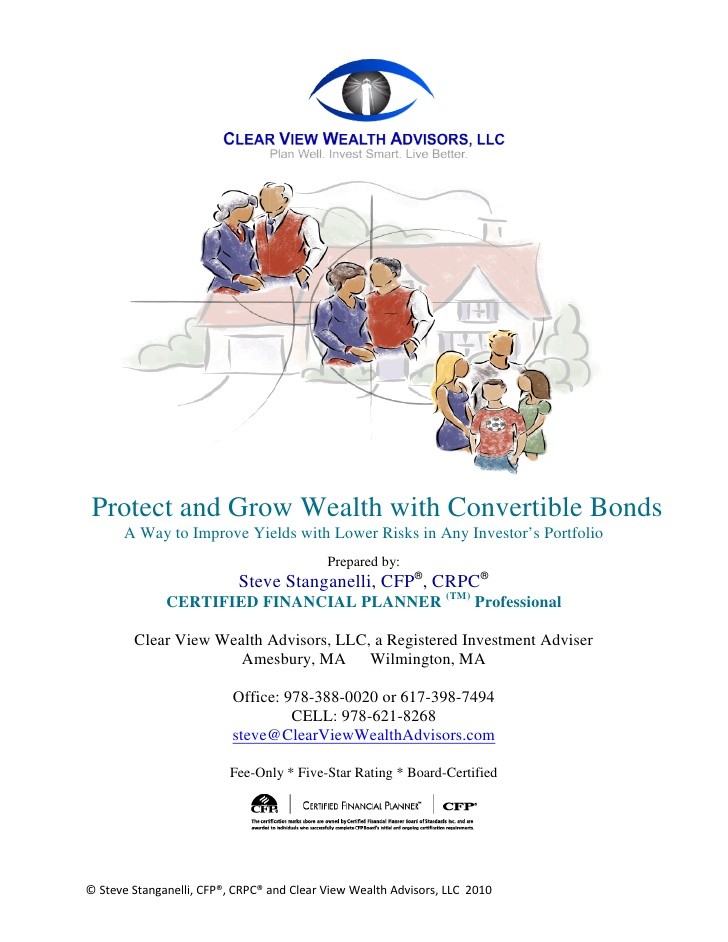Convertible bonds_1
Post on: 17 Сентябрь, 2015 No Comment

Convertible bonds are bonds that can be converted into common stock at the option of the bondholder. The conversion provision of a convertible bond grants the bondholder the right to convert the bond into a predetermined number of shares of common stock of the issuer. A convertible bond is, therefore, a bond with an embedded call option to buy the common stock of the issuer. [note 1] [1]
The first convertible bonds were sold by US railroad companies in the mid nineteenth century. The contemporary convertible bond market is global, with securities being issued in the US, Canada, Europe, Asia Pacific ex Japan, and Japan. [2]
Contents
Institutional issuers and purchasers of convertible bonds
Issuers of convertible bonds often do so in order to reduce the interest coupon payable upon the bond issue, or to delay dilution of stock equity holders. [3] The option of stock conversion is a value that investors pay a premium for, so the bond issuer can demand a higher price for the bond, which results in a lower interest coupon on the bond.
Historically, major large financial institutions such as insurance companies, banks, and hedge funds have been major participants in the convertible bond market. Insurance companies have purchased convertibles to gain stock market exposure from bond portfolios; banks have issued convertible bonds to meet regulatory capital requirements, and hedge funds have specialized in convertible bond arbitrage strategies. However, many arbitrage hedge funds closed due to heavy losses in 2007 and 2008 [4]. and in June 2011 bank regulators placed restrictions on the use of some types of convertible bonds used to meet capital requirements by very large, systemically important banks. [5]
Convertible bond fundamentals
Convertible bonds possess a number of complex features. The specific terms of a bond’s maturity, coupon, and conversion options can be different for each bond and are detailed in the bond indenture. [note 2]. that entitles the investor to convert the bonds into a predetermined number of stock shares. [2]
Valuing a convertible bond can be complex due to the hybrid nature of the instrument, as it contains both fixed income and stock market factors. Professional institutional investors tend to use the mathematics of options (colloquially known as the Greeks) [note 3] to model the non-linear interplay of these factors.
The basic elements in valuing a convertible bond are graphically illustrated in the figure (Figure 1.) to the right. The graph models bond valuation (the base price); the stock conversion value (conversion price x number of shares), and the premium for the conversion option.
Base price
A convertible bond’s maturity and fixed interest rate (along with other bond qualifications) are laid out in the bond’s indenture. Assuming the underlying stock price of a convertible bond fails to reach the conversion price, and the bond does not default, an investor will receive, at maturity, the defined bond interest and principal repayment. In the graph, the base price is represented by the horizontal yield to maturity investment value line.
Conversion price
The conversion price is established by the bond’s indenture. The issuer will declare the number of stock shares (known as the conversion ratio) to be received upon conversion. For example, if the bond is issued at a $1,000 price and is convertible into 20 shares of common stock, the conversion price for the shares will be $50 per share (price divided by convertible shares).
Conversion premium
The conversion premium is calculated as follows:
Conversion Premium = Bond Price — (Stock Price x Conversion Ratio)

Thus, if a bond, with a conversion ratio of 20, was issued at a $1,000 price and the common stock is selling for $42, the conversion premium would be determined as:
$160 = $1,000 — $840 = $1,000 — ($42 x 20)
If the issue is sold at par, then the conversion premium would be 19 percent ([$1,000 — 840]/840).
When the value of a convertible bond’s underlying stock is far below the price of the bond, the convertible bond will usually behave more like a conventional bond. Yield to maturity and conversion premiums will generally be high. As the value of the underlying stock moves toward parity with the bond price, the convertible bond will become more sensitive to movements in the stock price, and generally provide lower yields to maturity and lower conversion premiums. [6] Over longer holding periods, convertible bonds have typically realized higher correlations with stock market returns than with bond market returns. [note 5]
Risks
Convertible bonds are subject to the following risks.
- Credit risk. Convertible bonds, like all corporate bonds, are subject to credit risk, the risk that an issuer may default on the debt, [note 6] or that the bond will be subject to downgraded status due to deteriorating corporate finances and/or deteriorating economic conditions. Many convertible bonds are not investment grade bonds. [note 7] On a fundamental level, convertible bonds are subordinated debt, meaning that, in default an issuer’s conventional bonds must be paid before convertible bonds can be redeemed.
- Interest rate risk. When the value of a convertible bond’s underlying stock is far below the price of the bond, the bond will be more subject to price fluctuation caused by changing market interest rates. These changes will be tied to the bond’s duration. Movements in the bond’s value towards the price of conversion is marked by an increasing positive convexity in the duration. [2]
- Equity risk. As the convertible bond moves towards or surpasses conversion parity, the bond becomes more influenced by the movement of the underlying stock price, usually with an increase in volatility. While the interest earned by convertible bonds helps cushion downside risk, convertible bonds can experience considerable declines in market value, as shown in the market performance of US convertible bonds during bear markets in stocks: [6]














